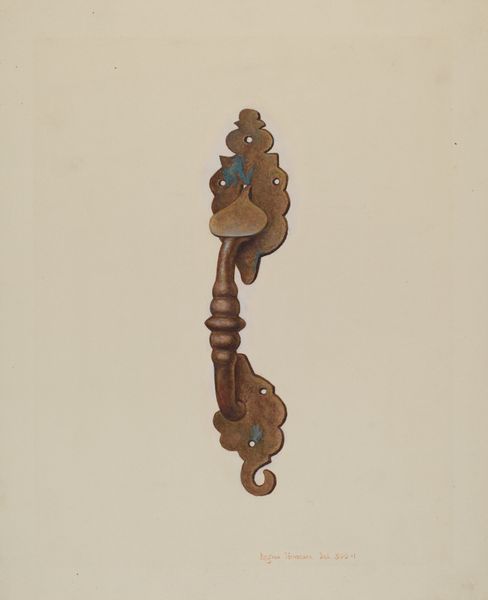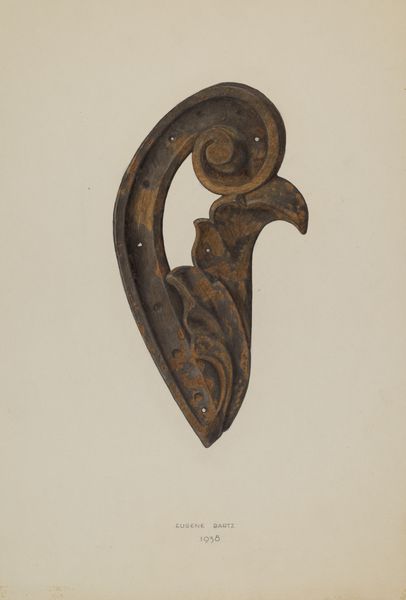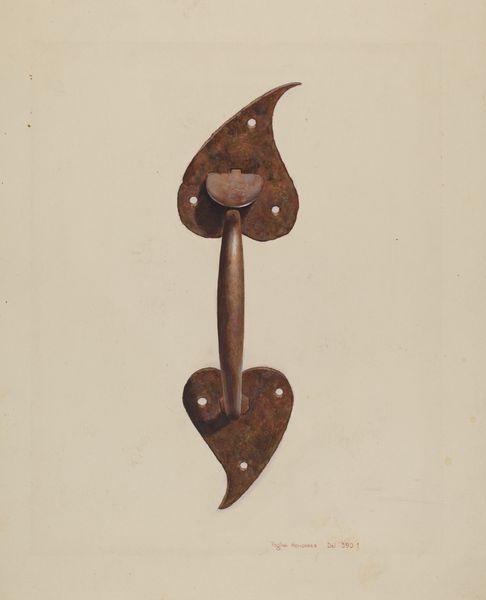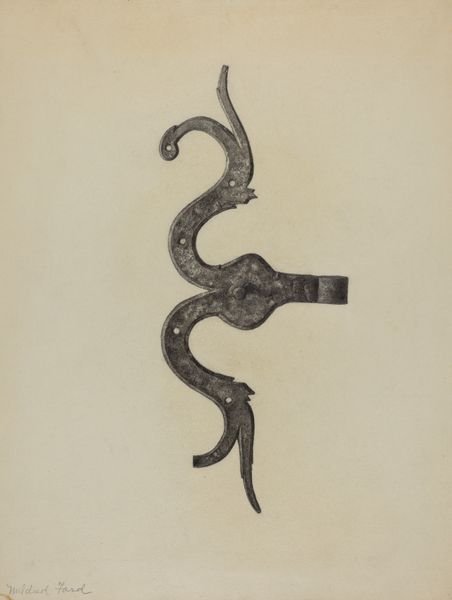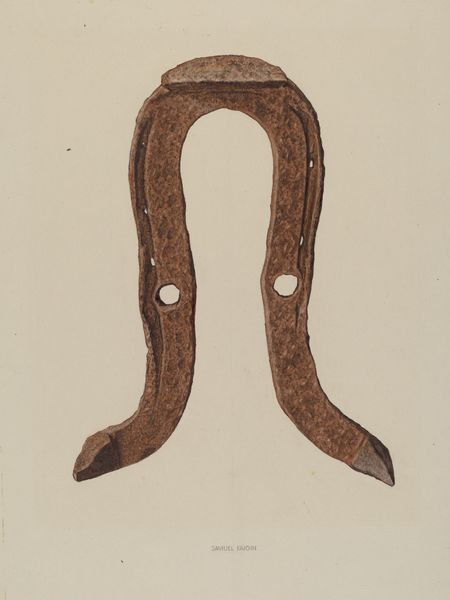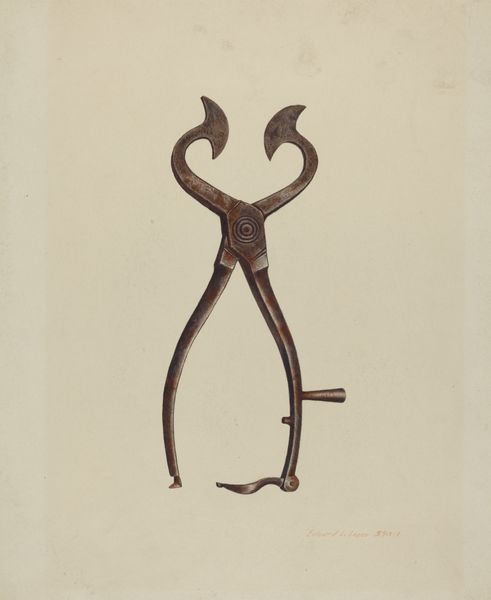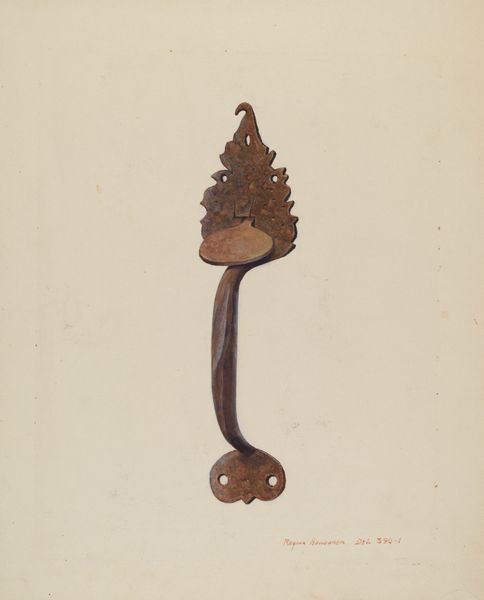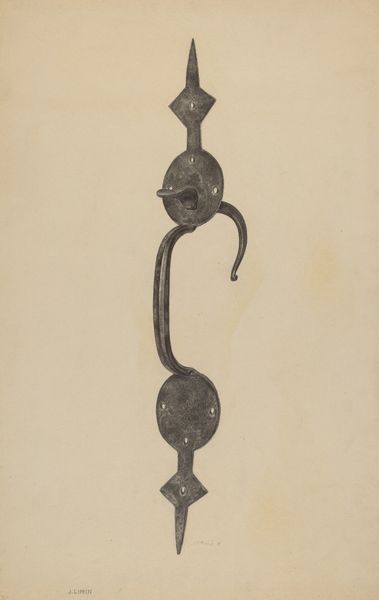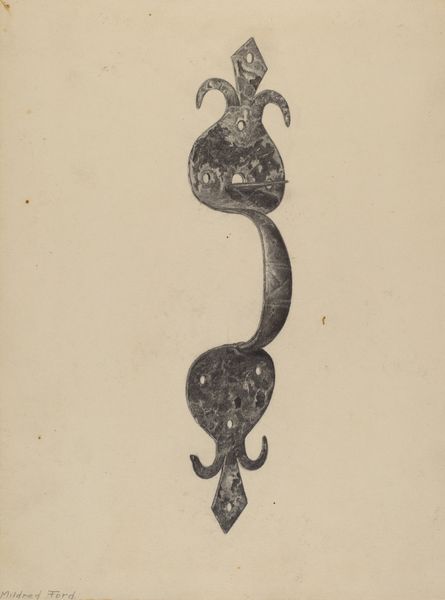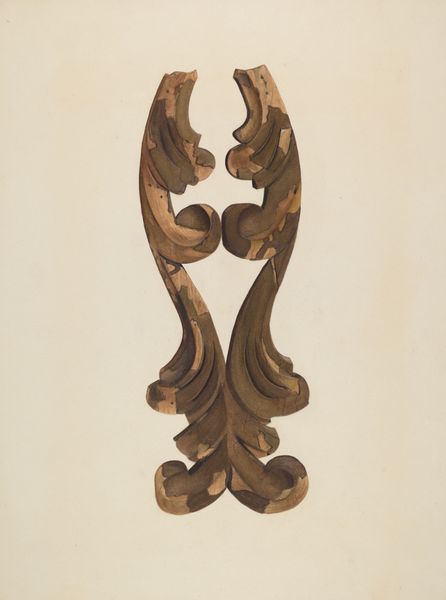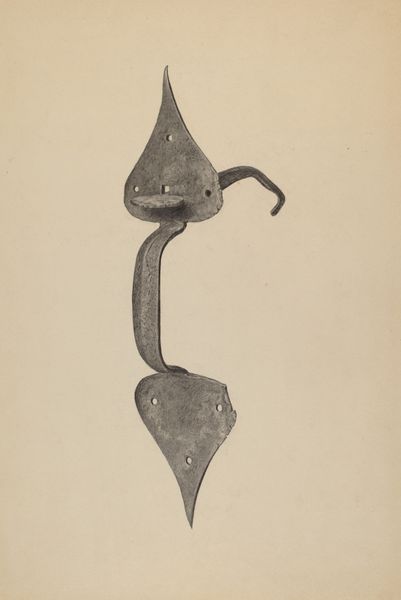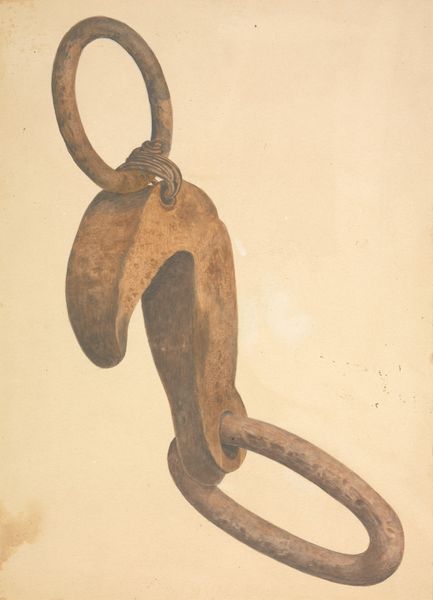
drawing, paper, watercolor
#
drawing
#
toned paper
#
paper
#
watercolor
#
realism
Dimensions: overall: 27.6 x 36.5 cm (10 7/8 x 14 3/8 in.) Original IAD Object: 12 3/4" long; 6 3/4" wide
Copyright: National Gallery of Art: CC0 1.0
Editor: Here we have Nicholas Amantea's "Hinge Butt," dating from around 1940, done with watercolor and drawing on paper. It's such a detailed rendering of something so mundane, almost elevating it to this icon-like status. What are your initial thoughts on it? Curator: It’s interesting how Amantea focuses so intently on this utilitarian object. Consider the social context of the 1940s. With the rise of industrialization, everyday objects became increasingly mass-produced and often devoid of aesthetic consideration. By carefully depicting this particular hinge, possibly hand-forged, is Amantea perhaps making a comment on craftsmanship and the loss of individuality in a rapidly changing world? Editor: That’s a really interesting angle. I was mostly seeing it as a celebration of form, but your point about industrialization… How do you think its presentation, as a drawing displayed perhaps in a museum, impacts our understanding of its meaning? Curator: That’s the key question, isn't it? The act of placing it within a museum context immediately elevates it. It asks the viewer to see beyond its function as a hinge and consider it as a representation of a past way of life, or perhaps a commentary on our relationship with objects in general. Are we meant to mourn the loss of handcraftsmanship, or simply appreciate its unique form? Editor: So the meaning isn’t inherent, but shaped by where and how we encounter it? Curator: Precisely. The museum space transforms a functional item into a cultural artifact, imbued with new layers of meaning and significance. Even the title, "Hinge Butt," has a bit of playful, subversive humor, which suggests Amantea was aware of the irony of depicting such an object. Editor: I never would have considered its role within a cultural narrative. This has totally transformed how I look at it. Thanks! Curator: My pleasure! Thinking about how art interacts with society helps us unpack all sorts of assumptions we have about beauty, utility and value.
Comments
No comments
Be the first to comment and join the conversation on the ultimate creative platform.

